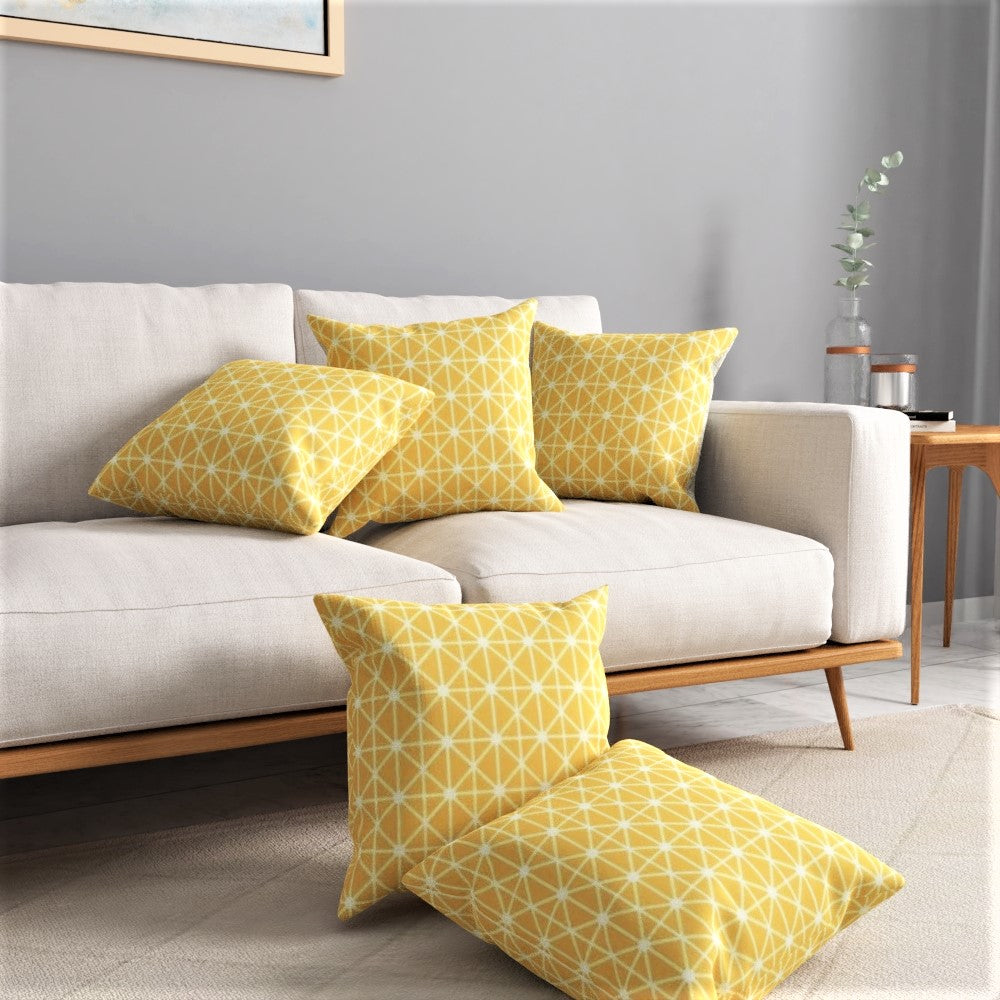Cotton Cushion Covers: A Comprehensive Overview

Cotton cushion covers are a popular choice for home décor due to their versatility, comfort, and aesthetic appeal. This essay explores various aspects of cotton cushion covers, including their history, benefits, types, design trends, environmental impact, and cultural significance.
History of Cotton Cushion Covers

Cotton has been used for fabric production for thousands of years. The earliest evidence of cotton use dates back to ancient civilizations in India, Egypt, and Peru, where cotton fibers were spun and woven into textiles. Cushion covers made from cotton became popular as societies began to place more emphasis on interior decoration and comfort. In the Victorian era, for example, elaborately embroidered cotton cushion covers were a staple in upper-class homes.
Benefits of Cotton Cushion Covers

- Comfort: Cotton is a soft, breathable material that provides a comfortable surface for resting. Its natural fibers allow for air circulation, making cotton cushion covers ideal for both warm and cool climates.
- Durability: Cotton is known for its strength and durability. When properly cared for, cotton cushion covers can last for many years without losing their shape or color.
- Hypoallergenic: Cotton is a natural fiber that is less likely to cause allergic reactions compared to synthetic materials. This makes cotton cushion covers a great choice for individuals with sensitive skin or allergies.
- Ease of Care: Cotton cushion covers are easy to clean and maintain. They can typically be machine-washed and dried, making them a practical option for busy households.
Types of Cotton Cushion Covers

- Plain Cotton Covers: These are the most basic type of cotton cushion covers, available in a variety of solid colors. They are versatile and can be easily matched with different décor styles.
- Printed Cotton Covers: Printed designs on cotton cushion covers can range from simple patterns to intricate motifs. Floral prints, geometric shapes, and abstract designs are popular choices.
- Embroidered Cotton Covers: Embroidery adds a touch of elegance and craftsmanship to cotton cushion covers. These covers often feature intricate designs and are typically used as accent pieces.
- Textured Cotton Covers: Textured cotton covers, such as those with a waffle or ribbed pattern, add depth and interest to a room. These covers can provide a tactile experience, enhancing the overall sensory appeal of a space.
- Organic Cotton Covers: Made from organically grown cotton, these covers are an eco-friendly option. They are produced without the use of synthetic pesticides or fertilizers, making them a healthier choice for both people and the planet.
Design Trends in Cotton Cushion Covers

- Minimalist Aesthetics: Simple, clean lines and neutral colors are a hallmark of minimalist design. Plain cotton cushion covers in shades of white, beige, and gray are popular in minimalist interiors.
- Bohemian Style: Bohemian décor often incorporates vibrant colors, eclectic patterns, and a mix of textures. Cotton cushion covers with bold prints and embroidery are a perfect fit for this style.
- Scandinavian Design: Known for its functionality and simplicity, Scandinavian design favors natural materials and muted colors. Cotton cushion covers in soft pastels or earthy tones complement this aesthetic.
- Sustainable Design: As environmental awareness grows, there is an increasing demand for sustainable home décor. Organic cotton cushion covers and those made with eco-friendly dyes are gaining popularity.
- Cultural Patterns: Traditional patterns from various cultures, such as Indian block prints or African mud cloth designs, are being incorporated into modern cotton cushion covers. These designs add a global touch to home interiors.
Environmental Impact of Cotton Cushion Covers

While cotton is a natural and renewable resource, its cultivation and processing can have significant environmental impacts. Conventional cotton farming involves the use of large amounts of water, pesticides, and synthetic fertilizers, which can harm ecosystems and human health. However, organic cotton farming practices seek to minimize these impacts by using sustainable methods, such as crop rotation and natural pest control.
Choosing organic cotton cushion covers can reduce the environmental footprint of home décor. Additionally, supporting fair trade cotton ensures that the farmers and workers involved in the production process are treated fairly and paid a living wage.
Cultural Significance of Cotton Cushion Covers

Cotton cushion covers hold cultural significance in many parts of the world. In India, for example, block-printed cotton fabrics have been used for centuries to create intricate designs that reflect the country's rich textile heritage. In West Africa, cotton is used to make traditional mud cloth, which is often used in home décor to symbolize cultural identity and heritage.
In Western countries, cotton cushion covers are a common element of home décor, reflecting various design trends and personal tastes. They are often used to add comfort and style to living spaces, making them a popular choice for both functional and decorative purposes.
Conclusion
Cotton cushion covers offer a perfect blend of comfort, durability, and aesthetic appeal, making them a staple in home décor. Their versatility allows them to fit into a wide range of interior design styles, from minimalist to bohemian. As awareness of environmental issues grows, the demand for organic and sustainably produced cotton cushion covers is increasing, reflecting a shift towards more eco-conscious consumer choices. Whether adorned with intricate embroidery or simple prints, cotton cushion covers continue to be a beloved element of home decoration, embodying both cultural heritage and contemporary trends.
